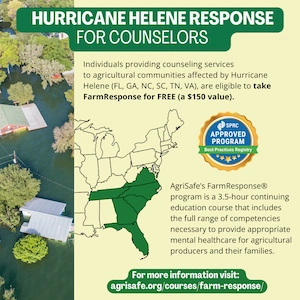Last updated on February 14th, 2025 at 02:31 pm
Musculoskeletal Resources
Musculoskeletal disorders (MSDs) affect the muscles, nerves, blood vessels, ligaments, and tendons. Farm and ranch workers can be exposed to risk factors at work, such as lifting heavy items, bending, reaching overhead, pushing and pulling heavy loads, working in awkward body postures, and performing the same or similar tasks repetitively. Exposures to known risk factors for MSDs increases a risk of injury.
Ergonomics is simply “fitting the task to the worker” rather than forcing the worker to fit the task. Applying ergonomic principles to workstations can help prevent a variety of conditions, such as back pain, shoulder pain, neck pain, and hip pain. Ergonomic principles are based on a combination of science and engineering and a thorough understanding of human capabilities and limitations. When these principles are applied to the design of a job, task, process or procedure, the risk of injury is significantly reduced.
The lower back is the most common site of back injuries and back pain and may include sprains and strains, herniated disks, and fractured (broken) vertebrae. These injuries can cause pain and limit your movement. To save your back, practice good lifting and carrying habits.
Whole body vibration (WBV) occurs when vibrations from a vehicle or power tool transfer to the human body. Over time, WBV can impair speech, increase heart rate, breathing rate and blood pressure, cause muscle fatigue and cramping, disrupt balance and perception, and cause lower back pain. Read about prevention strategies to address WBV.
Good posture is an important part of your long-term health, and the key is the position of your spine while in a dynamic or static posture. Dynamic posture is how you hold yourself when you are moving while walking, running, or bending. Static posture is how you hold yourself when you are not moving, such as when you are sitting, standing, holding a tool in place, and sleeping. Correct posture should maintain the three natural curves in the spine from the neck to the low back. Your head should be above your shoulders, and the top of the shoulders should be over your hips.
Posture Improvement Suggestions
- Be mindful of your posture while doing daily activities at the workbench, desk and while sitting in a tractor or other equipment seats.
- Stay active. Regular exercise to stretch, condition and/or increase body awareness such as Yoga and or Pilates. Exercises that strengthen your core (muscles around your back, abdomen, and pelvis) are advisable. Learn about poses that make you ready to farm.
- Maintain a healthy weight. Extra weight can weaken your abdominal muscles causing stress on your pelvis and spine contributing to low back pain.
- Wear comfortable, low-heeled shoes. Work boots with low heels and good ankle support will aid in balance and correct posture.
- Make sure your work surface at home and work are at a comfortable height. When sitting at your desk or in a tractor seat, your low back should be comfortably positioned against the back rest of the chair with feet flat on the floor. A pillow or rolled-up-towel placed behind the small of the back can provide some lumbar support if needed. Arms should align and rest comfortably at your sides. Switch sitting positions often and periodically walk around the office or tractor to gently stretch muscles to relieve neck, shoulder, arm and back tension.
Farm/Ranch Equipment Ergonomics Suggestions
- Anti-fatigue matting. Place in front of workbenches.
- Adjustable tables with rollers. Adjust to fit mobile workspace and height of worker.
- Adjustable office chair. Always try a chair before you purchase to determine individual comfort. Be sure the height of the desk chair allows your feet to rest flat on the floor.
- Articulating keyboard trays, mouse, lumbar cushions and document holders. Choose a keyboard tray adjustable to the height and position of the user.
- Handle coatings or special gloves. These help suppress vibrations from power tools.
- Anti-vibration tractor seats. Consider anti-vibration seats to retro-fit tractors.
Musculoskeletal Resources
Fact Sheets and Guidebooks
Webinars
Page updated: August 2022




